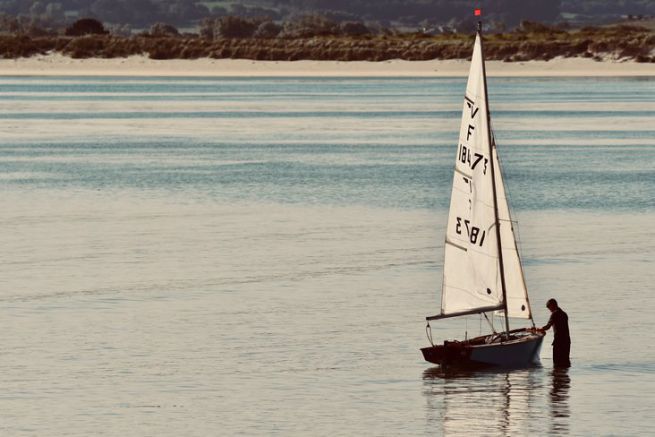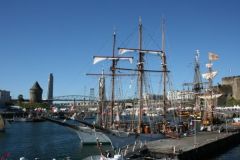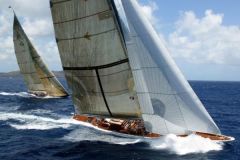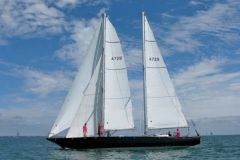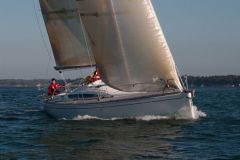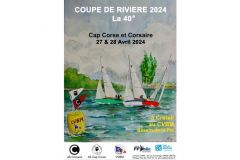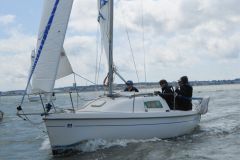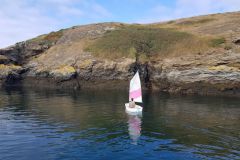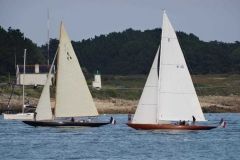An easy to use and economical boat
At a time when yachting is called yachting and reserved for a wealthy elite, the famous architect and navigator Jean-Jacques Herbulot will change the codes. 1951 is the year of birth of the Vaurien, a light and economical one-design dinghy built in plywood.
Originally built at the request of Philippe Vianney, founder of the famous Glénans school, the Vaurien has democratized boating. At the launch of the Glénans, the former resistance fighter is offered a few Argonautes, a training boat designed by Jean-Jacques Herbulot during the war, but he does not like it.

From debut to Glénans
Philippe Vianney then asked the architect to draw him a boat, simple to use for beginners and economical to produce and buy. Plywood is the perfect answer to this philosophy and it is from this material that the Vaurians will be born. For the tariff, it should not exceed the price of two bicycles. The dinghy is therefore priced at 55?000 F (today 1603 euros), which is four and a half times cheaper than the Sharpie, the first dinghy on the market, with a length of 9m.
The length is set at 4.08 m - the length of post-war plywood sheets - and the first one is built in the architect's Parisian salon. He owes his name to a dog that J-J Herbulot was particularly fond of. The first Vaurien sailed all summer 1952 in Les Glénans with a Firefly sail and an Argonaute jib.
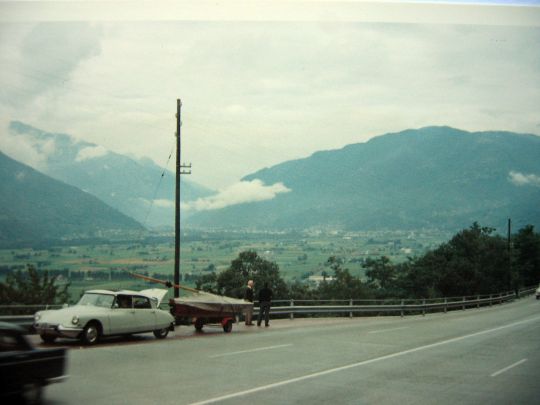
Success at the Boat Show
The 2nd copy was made at the request of the magazine "Les Cahiers du Yachting" It was exhibited at the October 1952 Boat Show on the banks of the Seine and was an immediate success. Everything is put together to please, the Vaurien is light, easy to handle and has contemporary lines with an almost straight bow, a relatively taut hull shape for the time and a relatively constant beam with a lot of width at the front. But most importantly, its price list is abordable?!
In view of the success of the dinghy, Philippe Vianney decided to have the first 100 units built at the Costantini yard in La Trinité sur mer. The sailmaker Le Rose de Concarneau started mass production of sails. Never before had a boat been built in this way, since in the 1950s they were built individually. With The Rascal came mass production.
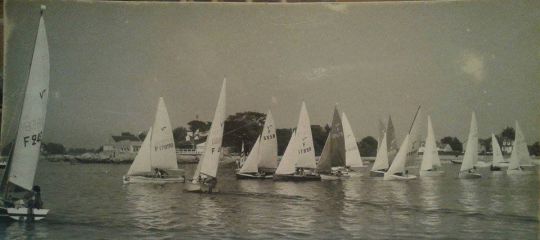
The birth of AS Vaurien, the French association of Vaurien owners
The 100 units sold like hotcakes and 100 new units were built. At the end of 1953, 200 Vauriens sailed, confirming the birth of the ASVaurien.
One year later, 400 boats had come out of the shipyards and the first National Championship, organised in Bénodet in 1954, was so successful that ASvaurien asked the F.F.Y.V. for a French Championship for 1956, which was granted.
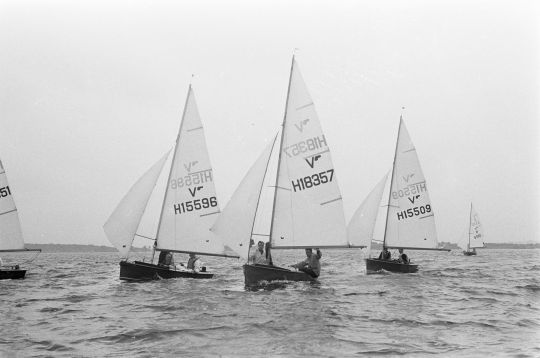
Rapid expansion
The series is undergoing extremely rapid development. Although it is basically a training boat, its simplicity and attractive price make it a real social phenomenon. Many private individuals make it their promenade boat while many sailing schools are developing thanks to it. Many sailors have discovered sailing thanks to this small 4.08m dinghy and many enthusiasts would probably never have sailed without it.
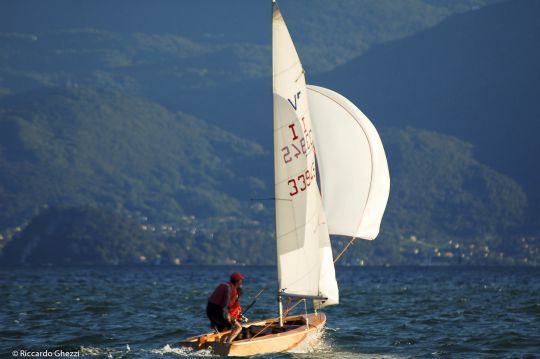
Le Vaurien is exported
In 1957, the Vaurien began to spread abroad: 80 boats in Switzerland, 25 in Belgium. In France, the number of registered Vauriens exceeds 2000. One year later, 1000 new boats are built and the French Championship attracts more and more people, with 100 participants.

Change in manufacturing
In 1965, the Vaurien was built in polyester, but its use was mainly reserved for sailing clubs. The series continued to evolve and with the advent of plastic, buoyancy boxes, aluminium masts, spinnaker, and a liberalization of the deck fittings were allowed.
Today, there are 36?319 sail numbers assigned by the class. Vauriens can be found all over the world, as evidenced by the annual world championships, which bring together around 100 boats of around ten different nationalities. Many great sailors began as Vaurien, like Eric Tabarly, Philippe Poupon, the Pajot brothers or Jean Le Cam.
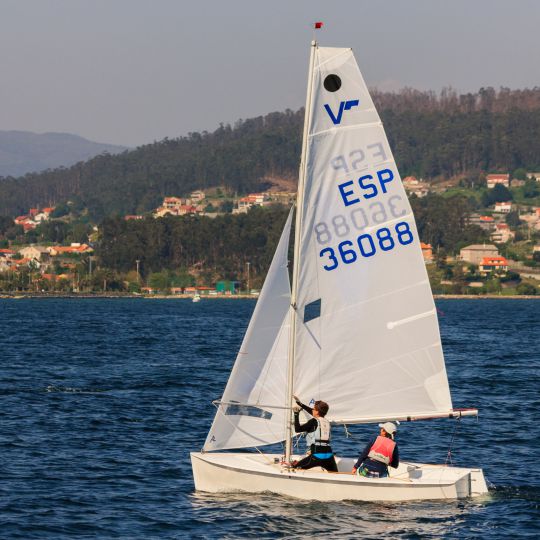
An amateur construction
At the beginning of the 2000s, AS Vaurien sold about fifteen plans intended for amateur construction. In 2019, it is still possible to build your own boat for a budget of 700 to 1000 euros and a construction time of 200 to 300 hours.

The different types of Ravens
Le Vaurien is an ideal boat to learn to steer and to race. Its chine hull has a narrow gunwale up to the transom and a fairly short foredeck, placed well forward of the mast and ending in a coaming. The open stern is designed to accommodate an outboard motor, but also allows easy boarding, especially from a beach. The daggerboard simply flips up to avoid an obstacle and the rear of the keel carries a protective fin.
The cockpit is rather spacious and can accommodate four people on a trip. The sloop rig has a high boom, the mast is supported by a pair of shrouds and spreaders.
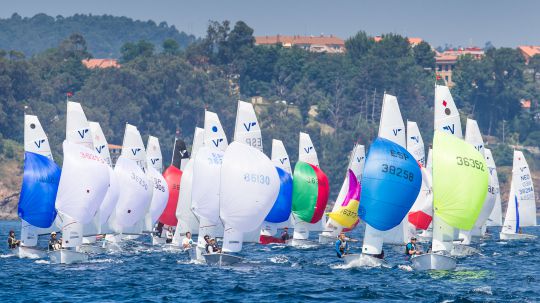
The Rascal "Tradition"
We are talking here about the original Vauriens (or similar in every way to the originals), designed by Jean-Jacques Herbulot and equipped with wooden or aluminium rigging that respects the original sail plan. Their hull is made of wood, but can also be one of the very first in polyester (Spair Marine, AMC...).
Features :
- Length: 4.08 m
- Width: 1.48 m
- Weight: 95 kg (total weight)
- Mainsail : 5,60 m² (5,60 m²)
- Joists: 2.50 m² (2.50 sq. ft.)
- Spinnaker: 8,10 m²
The "Classic" Rascal
This model remains faithful to the lines drawn by Jean-Jacques Herbulot. Its sails date from before the 2009 modification, which is found on the modern rascal. Its hull is made of wood or polyester.
Features :
- Length: 4.08 m
- Width: 1.48 m
- Weight: 73 kg (hull only)
- Mainsail : 5,60 m² (5,60 m²)
- Joists: 2.50 m² (2.50 sq. ft.)
- Spinnaker: 8,10 m²
The Rascal "2009 Gauge"
It is the modern Vaurien, an evolution of the classic dinghy designed by Jean-Jacques Herbulot. It has a new sail plan (with horn mainsail, jib and spinnaker enlarged) adopted by the series since 2009.
This category includes high-performance boats, whether they are made of polyester or hand-built with a wooden hull.
Features :
- Length: 4.08 m
- Width: 1.48 m
- Weight: 73 kg (hull only)
- Mainsail : 7,60 m² (7,60 sqm)
- Joists: 2.90 m² (2.90 sq. ft.)
- Spinnaker: 9.40 m² (9.40 sq. ft.)
